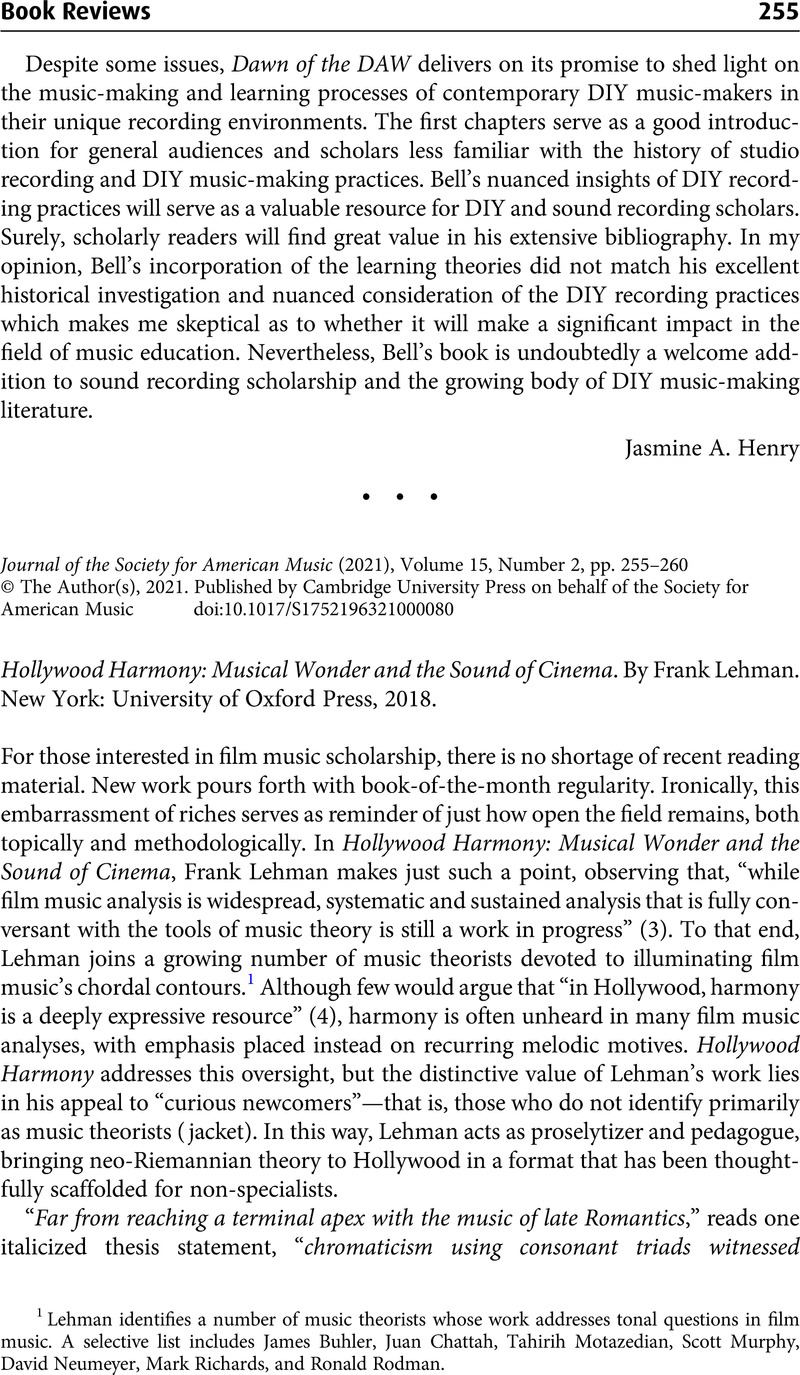No CrossRef data available.
Published online by Cambridge University Press: 04 May 2021

1 Lehman identifies a number of music theorists whose work addresses tonal questions in film music. A selective list includes James Buhler, Juan Chattah, Tahirih Motazedian, Scott Murphy, David Neumeyer, Mark Richards, and Ronald Rodman.
2 For a more thorough survey of neo-Riemannian theory, see Cohn, Richard, “An Introduction to Neo-Riemannian Theory: A Survey and Historical Perspective,” Journal of Music Theory 42, no. 2 (1998), 167–180CrossRefGoogle Scholar. See also The Oxford Handbook of Neo-Riemannian Theories, ed. Gollin, Edward and Rehding, Alexander (New York, Oxford University Press, 2011)CrossRefGoogle Scholar.
3 See, for example, Bukatman, Scott, Matters of Gravity: Special Effects and Supermen in the 20th Century (Durham, NC: Duke University Press, 2003)CrossRefGoogle Scholar; Turnock, Julie A., Plastic Reality: Special Effects, Technology, and the Emergence of 1970s Blockbuster Aesthetics (New York: Columbia University Press, 2015)Google Scholar; Paulin, Scott, “‘Cinematic’ Music: Analogies, Fallacies, and the Case of Debussy,” Music and the Moving Image 3, no. 1 (2010), 28–48Google Scholar.